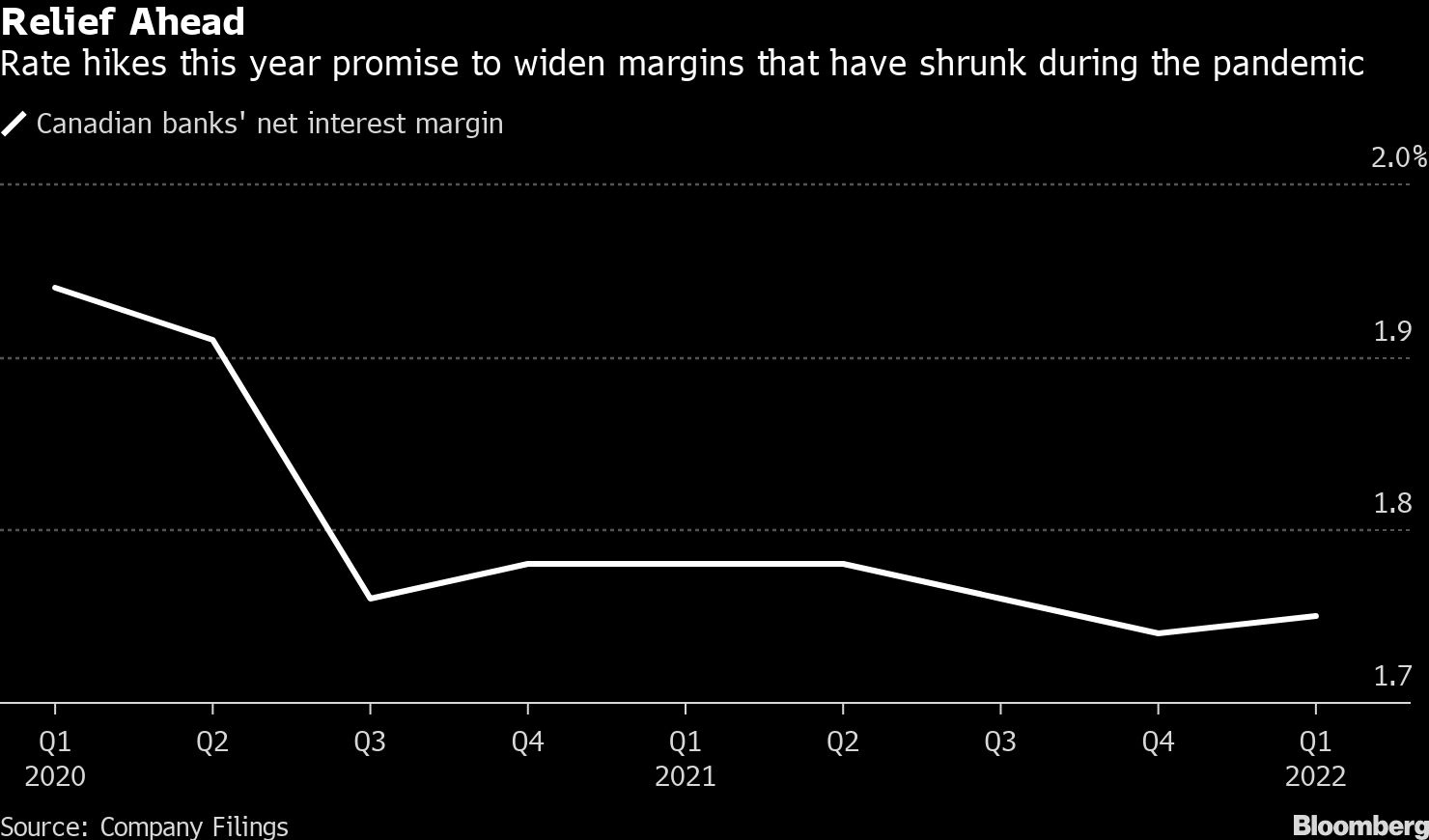Feb 23, 2022
Canadian banks face smaller profit growth before hike in rates
, Bloomberg News
The Canadian banks will show softer earnings results this quarter: Analyst
Canada’s banks are poised to report their smallest earnings increases in a year and a half, before rising interest rates expected in the months ahead are likely to reignite profit growth.
The country’s six largest lenders are projected to post a 4.6 per cent gain in net income on average for the fiscal first quarter, according to analysts’ estimates compiled by Bloomberg. That would be the smallest increase since the third quarter of 2020, when earnings fell 18 per cent as the banks stashed away capital to protect against potential loan losses during the pandemic. The earnings reports kick off Thursday with Royal Bank of Canada.
For Canada’s banks, the three months through January may signal a transition between the post-crisis boom -- when profits were fueled by surging capital-markets activity, along with the release of much of their capital stockpile -- and the years ahead, when rising interest rates promise to expand their lending margins. The Canadian central bank is expected to hike rates on March 2, when its next policy decision is scheduled, with at least six more increases likely in the next year.
“Higher rates do benefit their margins, and a large portion of that will fall to the bottom line,” Canaccord Genuity Group Inc. analyst Scott Chan said in an interview. “The outlook right now, with the variant leaving and things reopening, looks very constructive for the personal and commercial business.”
That would be a welcome change for financial firms that have watched their lending margins shrink and interest income stagnate as central banks slashed interest rates to help the economy during the COVID-19 crisis. Net interest margins are projected to have changed little in the first quarter from the previous three months, after narrowing for much of the past two years.
And a growth in lending beyond mortgages -- a business that’s been consistently strong, but with low margins -- also may help profitability in the quarters ahead, according to Canadian Imperial Bank of Commerce analyst Paul Holden.
“Canadian residential mortgage growth remains robust, but other loan-growth categories are starting to scale up,” Holden said in a note to clients. “We see an acceleration in loan growth across loan types and geography. This is an additional tailwind for net interest margin.”

In the meantime, the trends that have driven the banks’ results coming out of the early days of the pandemic may have stalled. Capital-markets revenue at Canada’s six largest banks was little changed from a year earlier in the fiscal fourth quarter, and declined in the previous three months.
The eight-company S&P/TSX Commercial Banks Index has advanced 6.9 per cent this year, compared with a 1.5 per cent drop for the broader S&P/TSX Composite Index. Canadian Imperial Bank of Commerce has been the top performer in the banks index, climbing 9.5 per cent.
Revenue from advising on mergers and acquisitions, while still strong, may have plateaued toward the end of last year. Trading revenue, which had tapered off as markets stabilized throughout 2021, may have gotten a lift amid market volatility in January, but is unlikely to regain levels seen early in the pandemic.
Similarly, the release of provisions for credit losses had helped earnings in recent quarters, but that trend may be coming to an end. Analysts project the Big Six will sock away $943.6 million (US$741.2 million) in provisions for credit losses, compared with $271 million of releases in the fourth quarter. While analysts have consistently overestimated potential provisions -- and underestimated releases -- the projections signal that the tailwind is diminishing.
Another potential pitfall for the banks will be expenses. The lenders’ personnel costs rose last year at more than twice the average rate of the previous three years, and inflation that’s exceeded economists’ projections is threatening to drive up expenses even more.
“The large banks more or less suggested that inflation risk appears to be manageable,” Royal Bank of Canada analyst Darko Mihelic said in a note. “But the expense outlook may be an area where we could hear a change in tone from the large Canadian banks given recent inflation data and the results we saw from the U.S. banks.”





